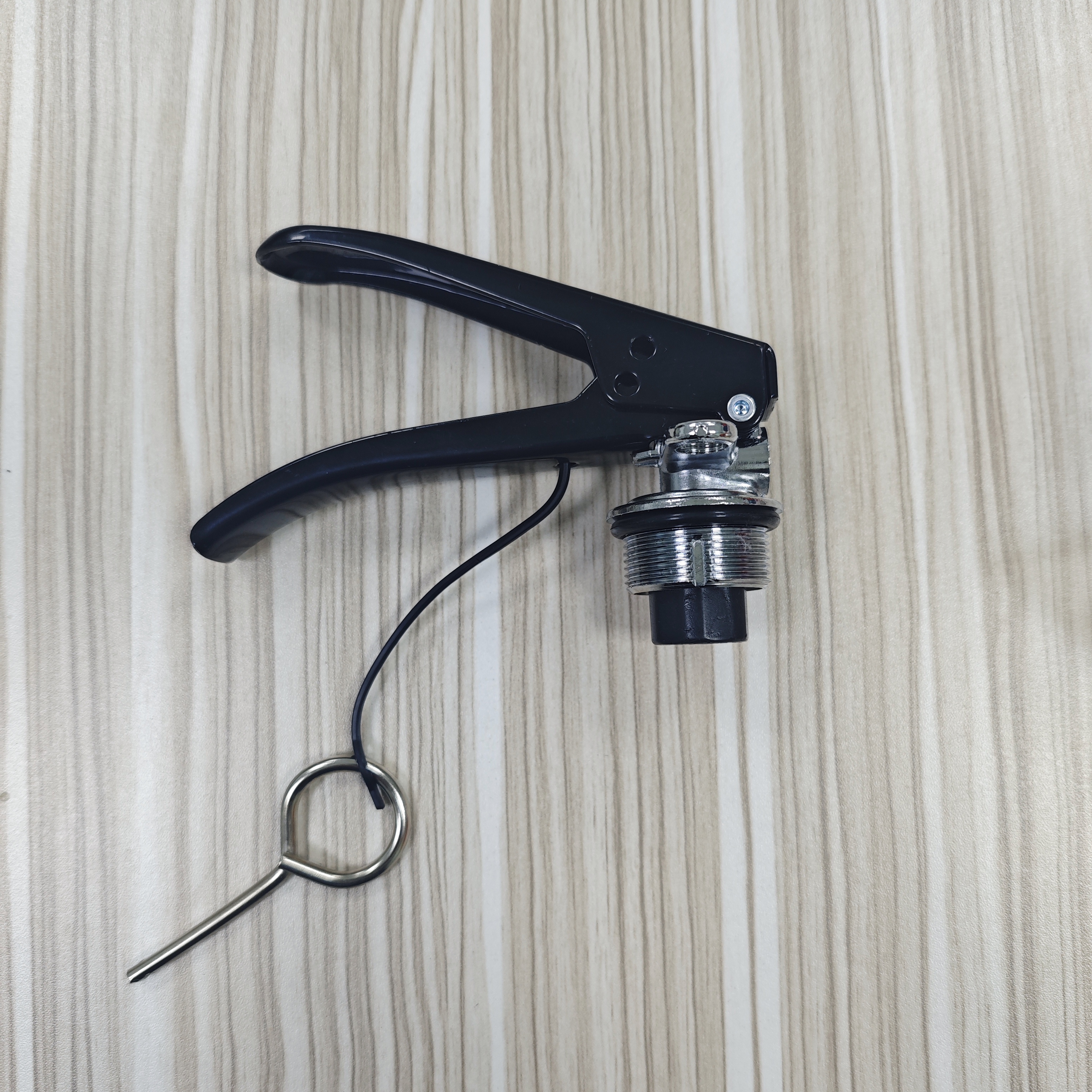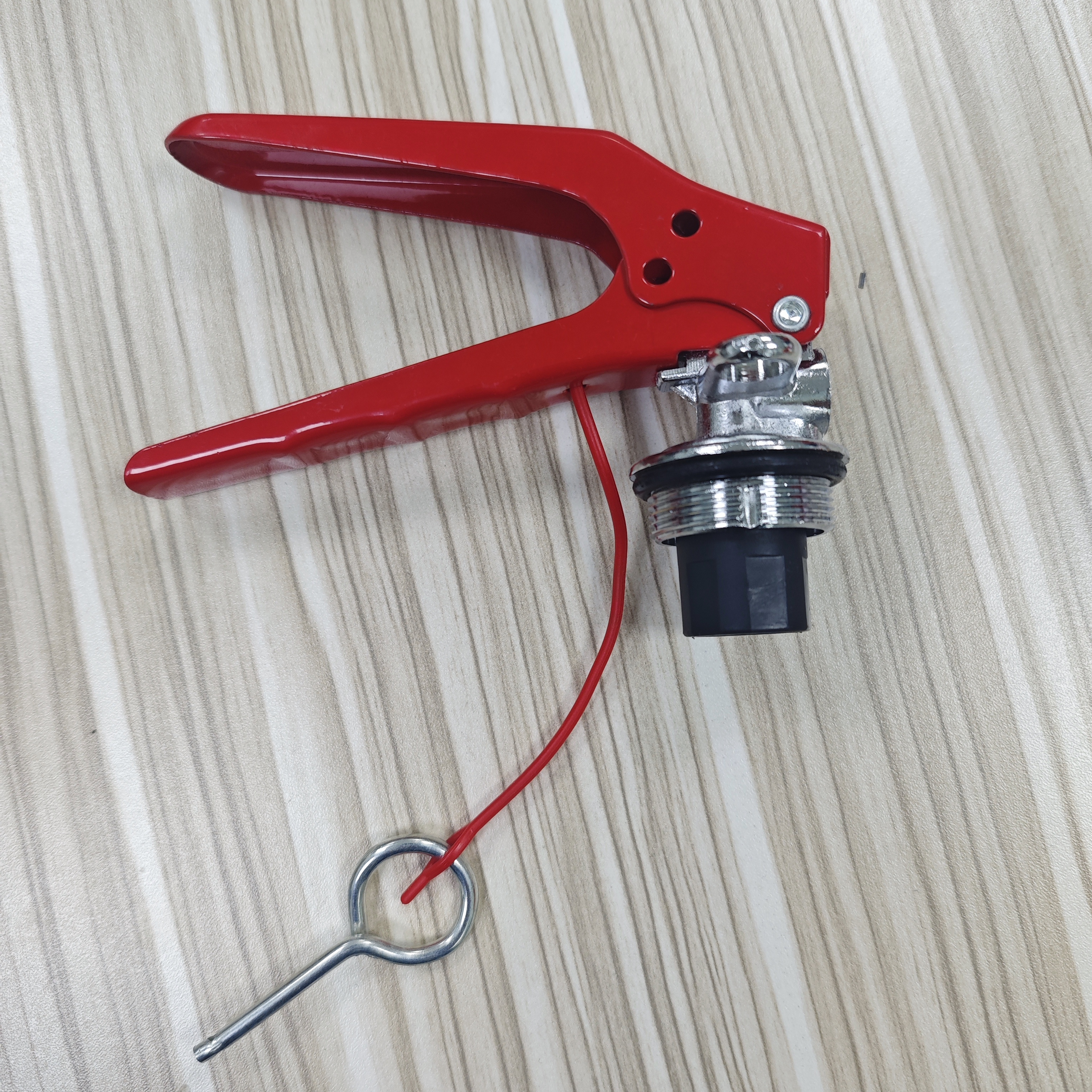Understanding the Valve of a Dry Powder Fire Extinguisher
A dry powder fire extinguisher is a crucial safety device designed to combat various types of fires, including Class A (ordinary combustibles), Class B (flammable liquids), and Class C (electrical equipment) fires. Its effectiveness lies in its well-engineered components: the valve, nozzle, pressure gauge, and the dry powder extinguishing agent. Among these, the valve plays a pivotal role in controlling the discharge of the extinguishing agent.
1. The Role of the Valve in a Dry Powder Fire Extinguisher
The valve of a dry powder fire extinguisher serves as the control mechanism that regulates the release of the extinguishing agent. When activated, the valve opens to allow the pressurized dry powder to flow through the system. A reliable valve ensures quick response times during emergencies, making it a critical component of the extinguisher.
2. Components of the Valve Assembly
The valve assembly of a dry powder fire extinguisher comprises several key components:
Valve Body: The main housing that contains the internal mechanisms of the valve.
Valve Stem: A rod that connects to the operating mechanism, allowing for the opening and closing of the valve.
Seals and O-rings: Components that ensure a tight seal, preventing leaks of the dry powder.
Operating Mechanism: The handle or lever that the user interacts with to operate the valve.
Each of these components must function properly to ensure the effective operation of the valve.
3. How the Valve Works
When the dry powder fire extinguisher is in its ready state, the valve remains closed, keeping the dry powder contained under pressure. Upon activation—typically by pulling the safety pin and pressing the handle—the valve opens, allowing the pressurized dry powder to be expelled through the nozzle. The design of the valve ensures that the dry powder is released in a controlled manner, maximizing its effectiveness in extinguishing the fire.
4. Importance of the Valve in Fire Safety
The valve is integral to the functionality of a dry powder fire extinguisher. A malfunctioning or damaged valve can result in the failure of the extinguisher to discharge the dry powder when needed, posing significant risks during a fire emergency. Therefore, regular maintenance and inspection of the valve are essential to ensure the extinguisher's reliability.
5. Maintenance and Inspection of the Valve
Regular maintenance of the valve is crucial to ensure its proper functioning. This includes checking for signs of wear, corrosion, or damage, and ensuring that the seals and O-rings are intact. Any issues detected should be addressed promptly, either by repairing or replacing the faulty components. Additionally, the valve should be tested periodically to confirm that it operates smoothly and effectively.
6. Common Issues with the Valve
Some common issues that can affect the valve of a dry powder fire extinguisher include:
Corrosion: Exposure to moisture can cause the valve components to corrode, impairing their function.
Worn Seals: Over time, the seals and O-rings can degrade, leading to leaks of the dry powder.
Mechanical Failure: The internal mechanisms of the valve can wear out or break, preventing the extinguisher from discharging properly.
Addressing these issues promptly can prevent the dry powder fire extinguisher from failing during an emergency.
7. Conclusion
The valve is a critical component of a dry powder fire extinguisher, playing a vital role in controlling the release of the extinguishing agent. Understanding its function, components, and maintenance requirements is essential for ensuring the reliability and effectiveness of the extinguisher. Regular inspection and maintenance of the valve can help prevent malfunctions and ensure that the dry powder fire extinguisher performs optimally when needed.



